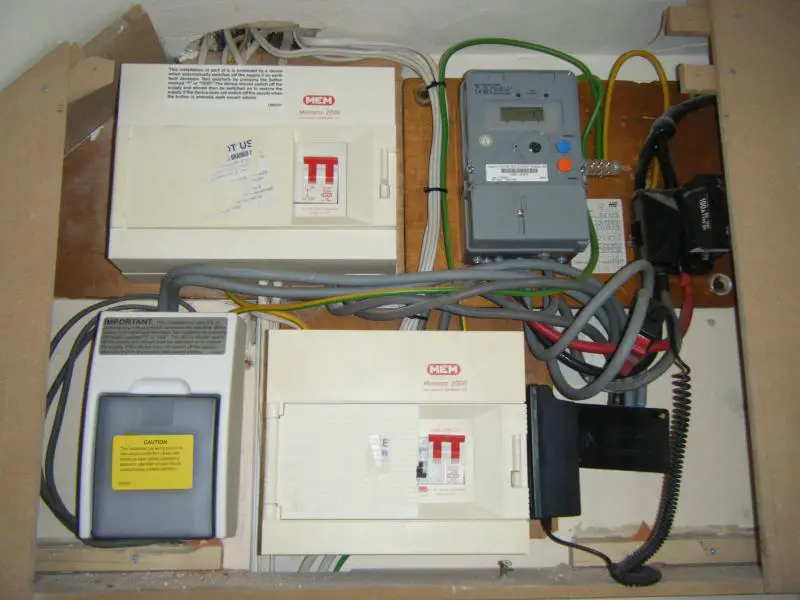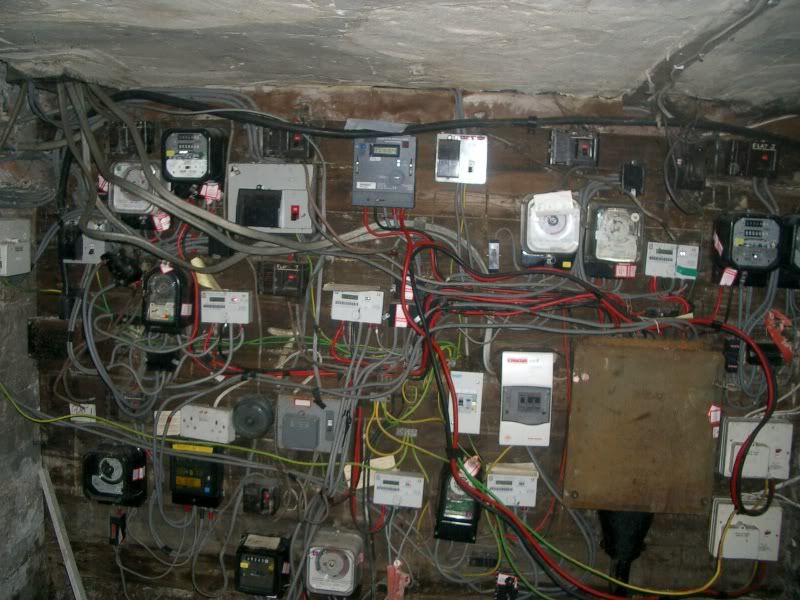hi all,,
basically have an old house and am aware that the wiring is not to 17th edt regs...
had the kitchen movved and a sparks came in and installed a new distribution box and ring for it all which is cool but the problem is now i have a distribution box for that. another large one for lights/sockets (and old kitchen now a spare),.. and anopther for econmy 7 storage heaters...
i think the lighting ccts are ok, but the sockets are not, they are the old coloured wire system and not a ring cct....
what i want to do is rewire the lot with new distribution boxes and get signed off,,,
Questions:
1- can someone from the councel come and sign it as current? am concerned becuase i know most sparks dont want to sign other peoples work., or how would i go about achieving this?
2- where the distribution boards are its a right mess, i mean i have supply in, then a double pole 6 way connector block, 2 large boards a further kitchen board and the meter,,, can all these go onto a single larger distribution box? or what would be the best advice here?
3- can someone point out the type is distribution box (s) required... storage heaters, sockets, lights. also exact type and grade of wires.
4- want to provide power to the garage, is 10mm armouded cable dug into ground ok then to a breaker box in garage ok,... also where exactly do i take this from in the house??
guys,, thanks again.
basically have an old house and am aware that the wiring is not to 17th edt regs...
had the kitchen movved and a sparks came in and installed a new distribution box and ring for it all which is cool but the problem is now i have a distribution box for that. another large one for lights/sockets (and old kitchen now a spare),.. and anopther for econmy 7 storage heaters...
i think the lighting ccts are ok, but the sockets are not, they are the old coloured wire system and not a ring cct....
what i want to do is rewire the lot with new distribution boxes and get signed off,,,
Questions:
1- can someone from the councel come and sign it as current? am concerned becuase i know most sparks dont want to sign other peoples work., or how would i go about achieving this?
2- where the distribution boards are its a right mess, i mean i have supply in, then a double pole 6 way connector block, 2 large boards a further kitchen board and the meter,,, can all these go onto a single larger distribution box? or what would be the best advice here?
3- can someone point out the type is distribution box (s) required... storage heaters, sockets, lights. also exact type and grade of wires.
4- want to provide power to the garage, is 10mm armouded cable dug into ground ok then to a breaker box in garage ok,... also where exactly do i take this from in the house??
guys,, thanks again.



